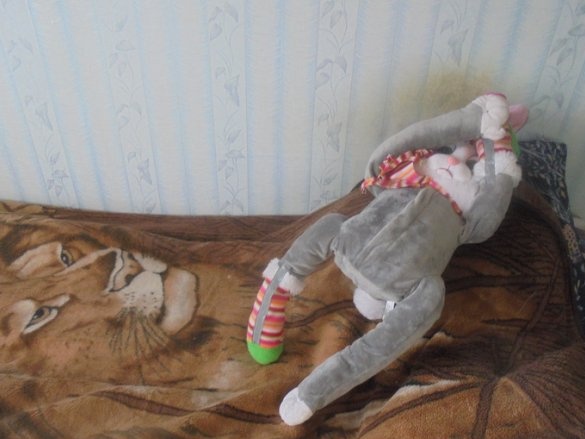I recalled one story, as a “flying saucer” flew into a neighboring garden, according to neighbors. Neighbors are elderly, rural people, seeing this "flying saucer", naturally, they got scared and locked themselves in the house. Only the next day they came to me and started vying to talk about this incident. They talked with such details, which was and wasn’t, that I could not stand it, laughed and dispelled their fears about the aliens, showing them my airplane model, accidentally flying into their garden and making so much noise.
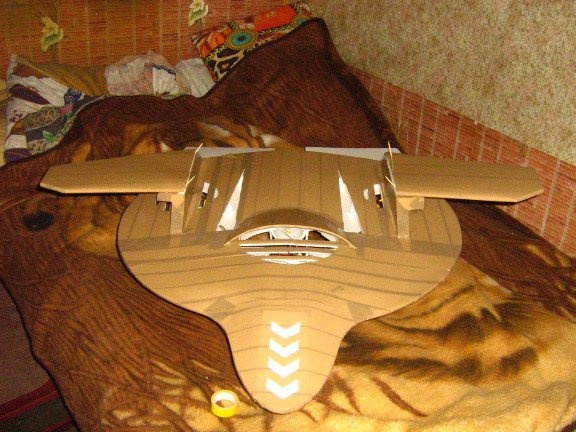
I must say right away that on the "plate" mine model really looked like it, but it’s a bit small in size ... it didn’t “grow out”. And there were no “light speakers” that blinked, as Lena’s neighbor put it, they were just seeing frightened neighbors.
The idea to build such a model came to me a long time ago, as soon as I read the ancient Indian manuscript "Vimanika Shastra" or more correctly "Vaimaanika-shastra" (Skt. वैमानिक शास्त्र, Vaimānika Śāstra IAST - "The Science of Aeronautics") - a Sanskrit manuscript about vimanas - flying apparatuses described in ancient Indian epics in Sanskrit.
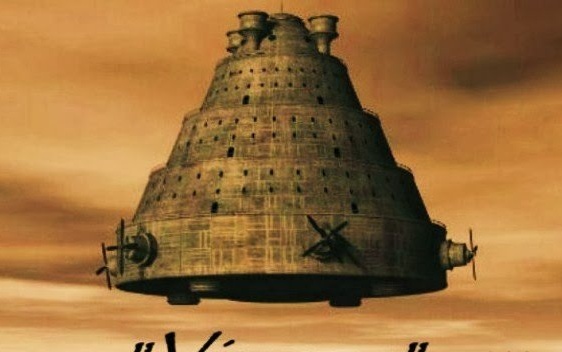
According to some reports, "Vimanika Shastra" was discovered in 1875 in one of the temples of India. It was compiled in the 4th century BC. the sage Maharsha Bharadwaji, who used even more ancient texts as sources. According to other sources, her text was recorded in 1918-1923. Venkatachakoy Sharma in the retelling of the sage-medium, the pandit Subbraya Shastri, who dictated 23 books of Vimanika Shastra in a state of hypnotic trance.
Sorry to stop at this manuscript like this, but otherwise it’s hard for you to imagine, so to speak, the flight of my thoughts at the beginning of the construction of this model. I am very sorry that the small video of the flight of this model did not survive, and there are very few photos left.
About this model, I started a topic on the site under the nickname "".
To be honest, starting to build this model without any blueprints or at least sketches of the appearance of the future model, I myself was under the influence of some kind of hypnosis.
I leave the digression, and begin to talk about the model itself.
Some vague images of the model were drawn in my imagination, and then Sergey Alexandrov sent me a small photograph in which several young people are standing next to the model of some kind of disco created by them.
This photo finally strengthened my thoughts about the shape of the aircraft that I wanted to create.
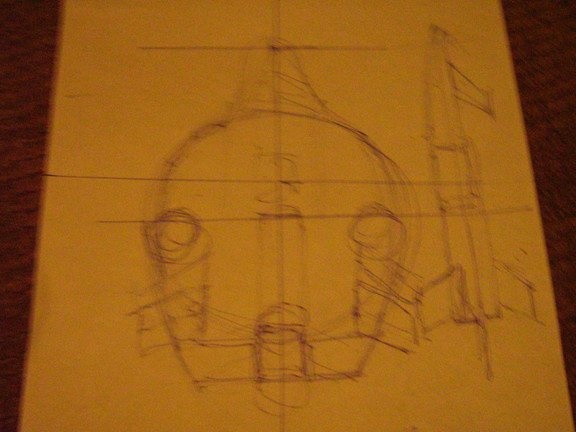
The idea of a tricopter scheme was suggested to me by Sergey Alexandrov, a gifted aircraft model designer, designer of numerous aircraft models, at that time we only got to know him.
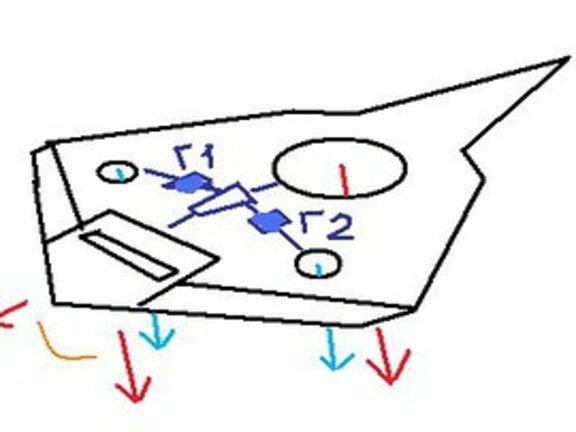
The next step was the choice of propulsion for the model. Revised many videos. I took many photos from a computer monitor.
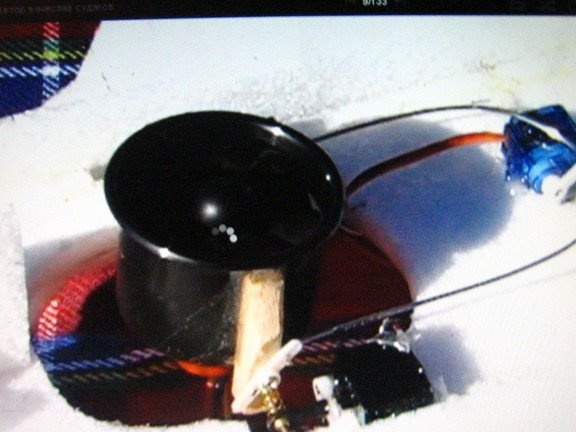
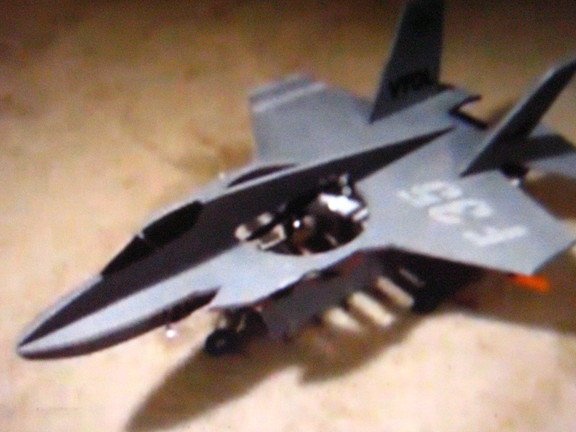
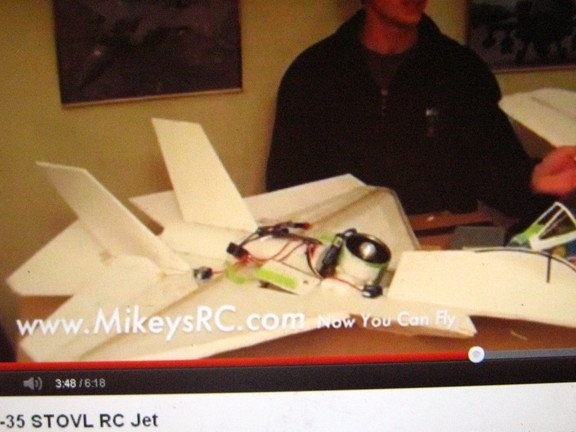
It was tempting to put the impeller on the role of a marching engine with a variable thrust vector, and the impeller had already prepared, but at the last moment, I decided to install a motor with a screw, first of all, this decision was made for reasons of weight saving of the model. The impeller needed a very capacious battery and a lot of voltage. And 4 to 5 cans is a lot of weight.
The material for the model was selected ceiling tile (ceiling) - 4 mm. thick.
Glue at that time I used only "Titan" universal, moisture resistant.
Glued from the ceiling the lower plane of the future aircraft.
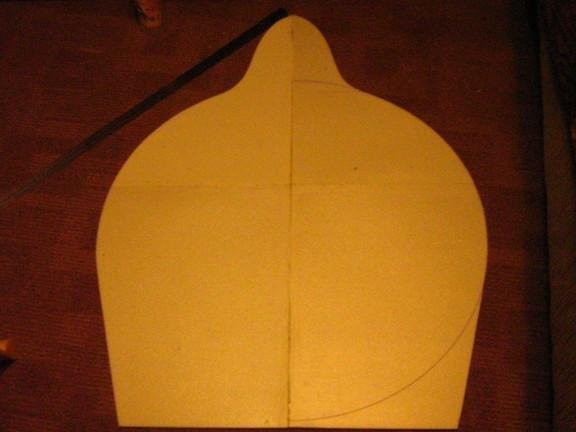
Glued the front of the fuselage.
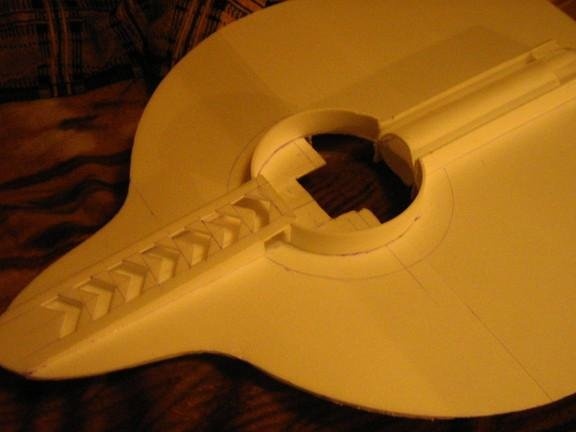
I cut a round hole in the CT model. I pasted an annular protrusion, restricting the air flow from the screw, directed under the bottom of the model. . Mounted a horizontal duct directing air from the screw back, while turning the axis of rotation of the screw. and creating cravings.
For experiments with the impeller, I installed a servo for the rotary mechanism.
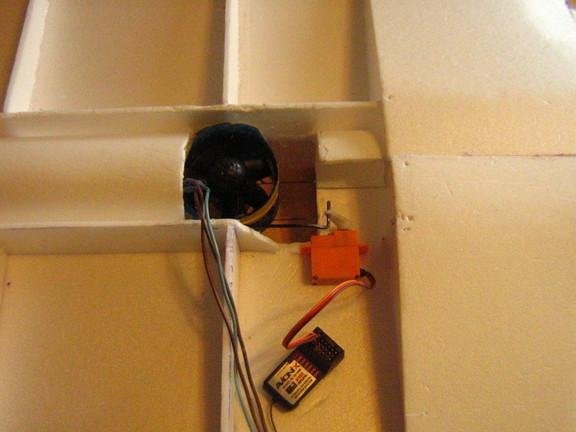
From the side walls of the fuselage glued stiffening ribs from the insulation "Penoplex" 20 mm thick. on which the external skin of the model is mounted.
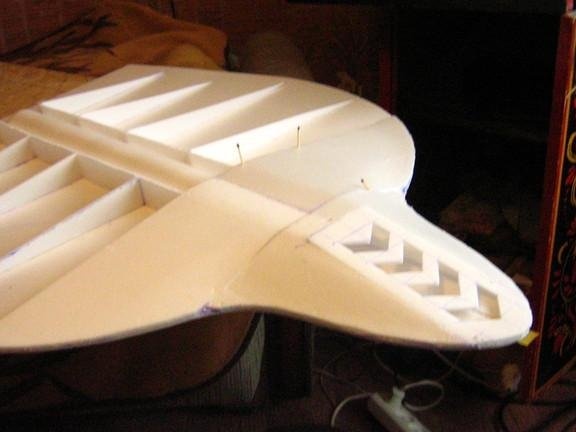
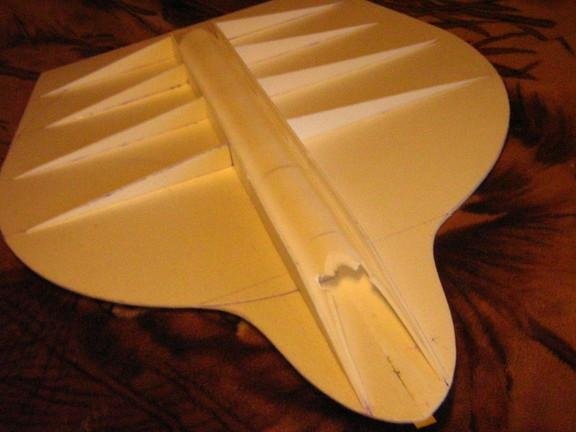
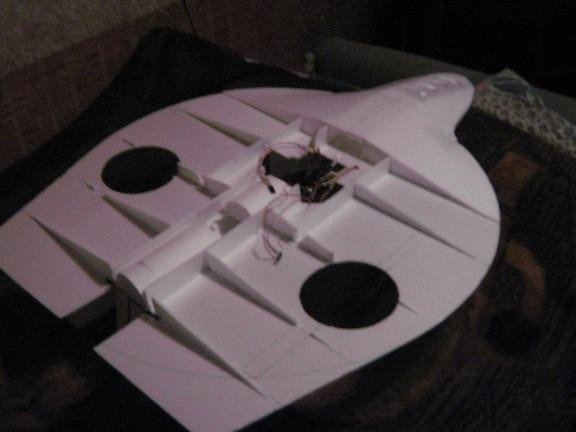
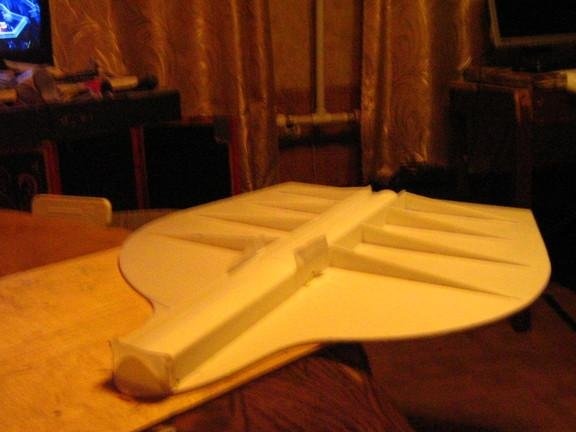
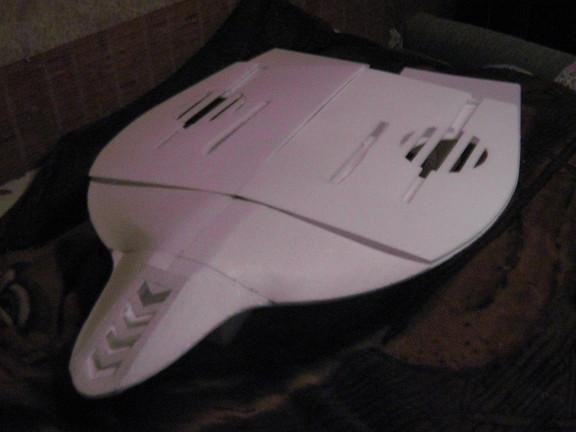
I cut the slotted holes in the outer skin of the aircraft and in the nose of the fuselage, for air access to all three screws.
Glued the side walls of the fuselage.
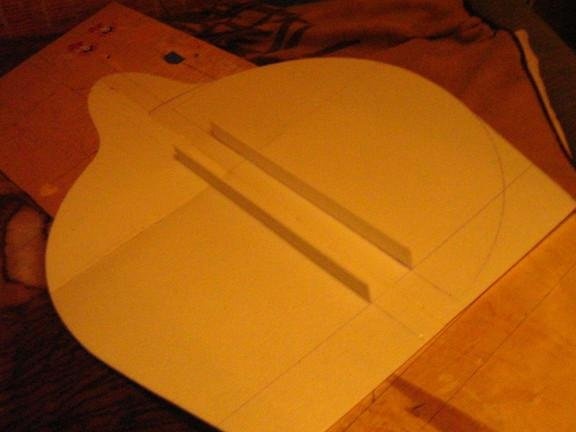
At the first stage of the experiments, installed motors 2212. and screws 7 X 6.
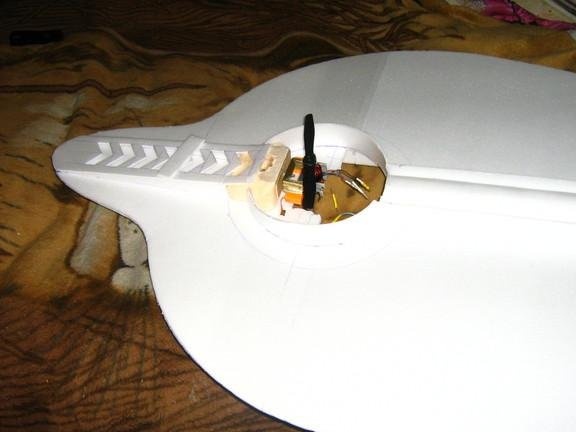
Made a rotary design for the marching engine.
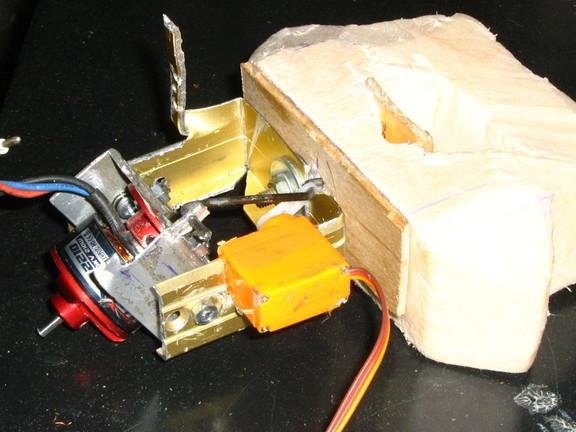
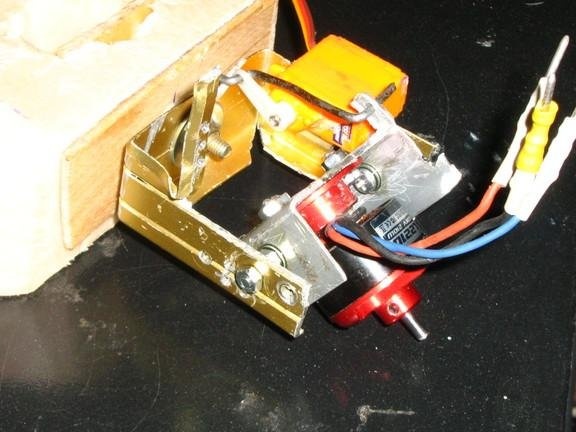
Installed in place and tested. The mechanism worked, there was little traction.
To increase the lifting force of the device, I built small wings on the upper skin of the model.
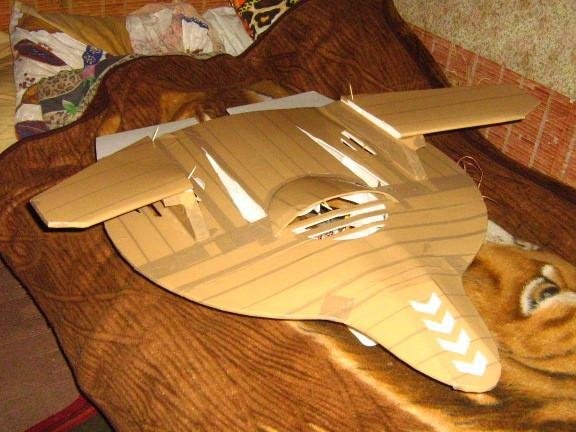
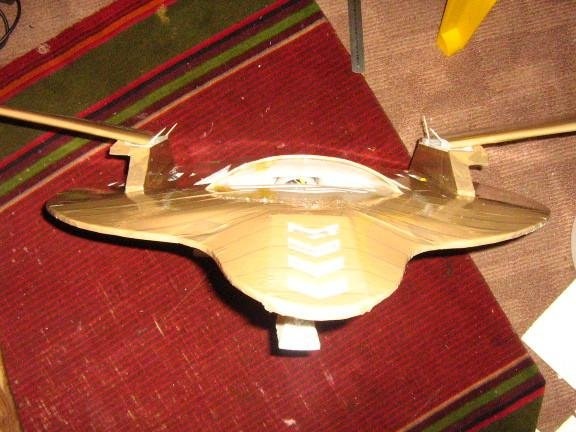
On the underside of the apparatus, I mounted supports - paws with soles, for greater stability.
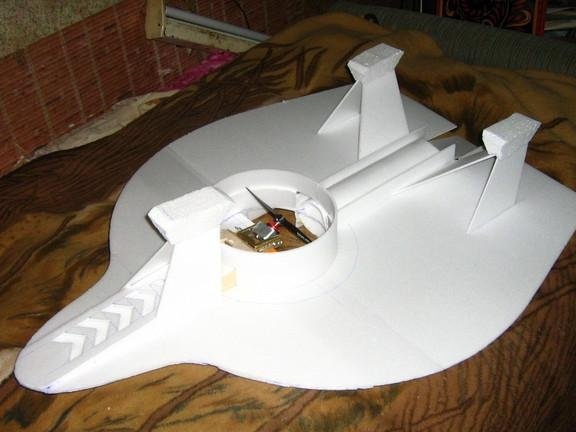
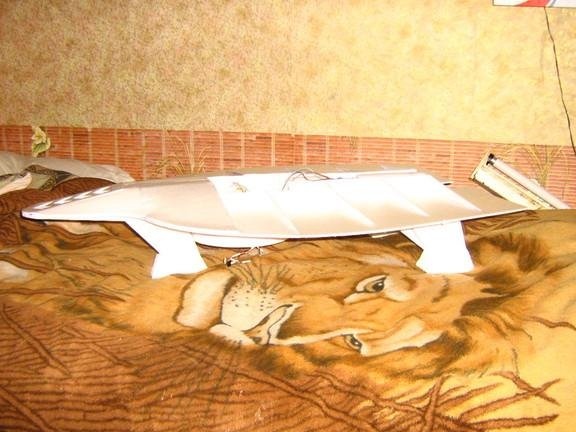
He covered the entire model with light brown tape. Behind, at the outlet of the horizontal duct, I placed the servo on the controlled thrust vector. On both sides of the duct hung elevons. The Elnwons hung on double-sided tape, sandwiched between the two layers of the ceiling from which they were made.
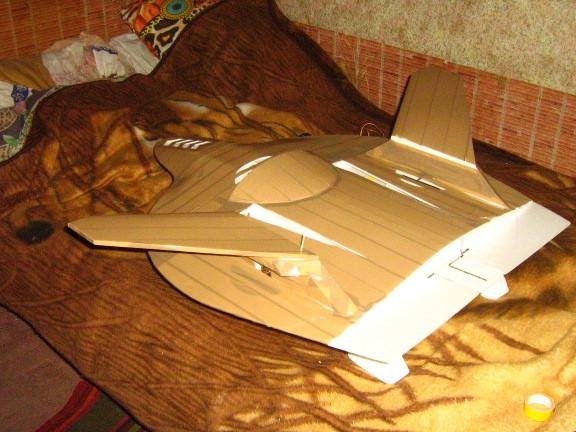

My "general designer" was shocked by this model. "Production Manager" Kuzya, stayed away from her, or even slept with a book under his head.
The first tests were carried out in a room. The model rose above the floor and hung fairly steadily. True, I had to help a little with the steering wheels and hands. When tested on the street, the model rose above the ground and moved quite steadily in the horizontal plane.
At that time there was not enough material means and experience to put gyroscopes, autopilot and lighting effects on the model.
That, perhaps, is all that I wanted to tell you about.
See you soon, your Valerian.




